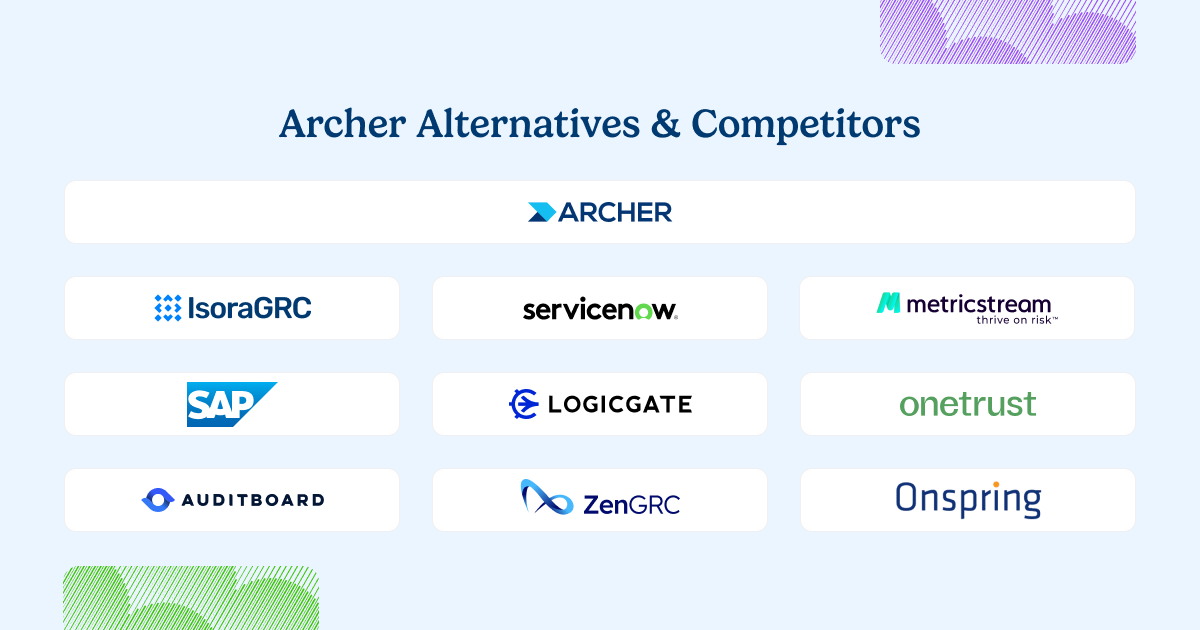
Archer IRM is one of the most recognized names in the GRC space. Built to support enterprise-wide governance, it offers deep configurability across risk, compliance, and audit programs. But security teams managing IT and vendor risk often find Archer more complex than helpful. It requires months of setup, leans heavily on technical resources, and isn’t designed for the day-to-day workflows most security teams need. Tools like Archer IRM are part of a category of all-in-one GRC platforms—powerful, but bloated. When you’re managing assessments, inventories, and risk management across teams, you need something focused.
Why Teams Look for Archer Alternatives
| Common Limitation | Why It’s a Problem | What to Look for Instead |
| Built for broad GRC use, not security teams | Workflows feel disconnected and overly complex | Purpose-built for IT and vendor risk |
| Long implementation timelines | Delays ROI and team momentum | Fast, no-code setup and intuitive UX |
| Difficult to engage non-GRC users | Low adoption across orgs | Designed for collaboration and usability |
| Heavy reliance on configuration | High maintenance cost and dependency on admin support | Structured, out-of-the-box workflows |
What to Look for in an Archer IRM Alternative
- Support for internal and vendor assessments
- Centralized asset and vendor inventories
- Built-in exception and risk tracking
- Fast deployment and lightweight admin overhead
- Collaboration features for both technical and business users
- Usability across teams—not just GRC specialists
Top Archer IRM Alternatives
1. Isora GRC
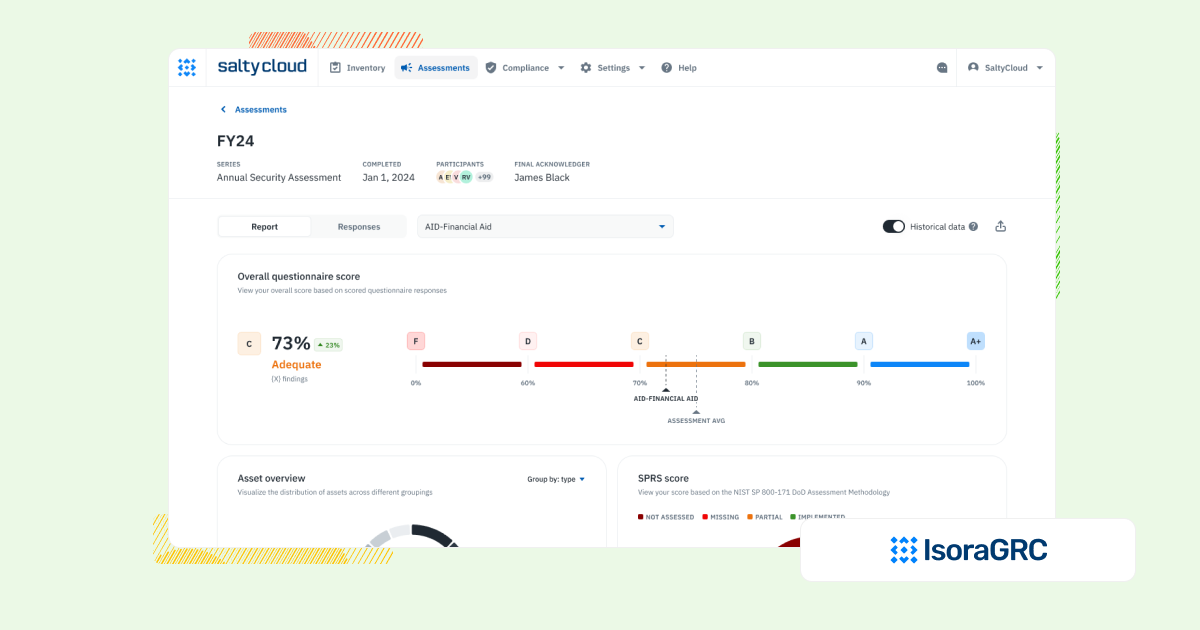
| Category | Details |
| Best For | Security teams that need to operationalize IT and third-party risk management across assets, third-party vendors, and business units. |
| Overview | Isora GRC is the GRC Assessment Platform™ built specifically for information security teams. It supports the full risk workflow, from assessments and questionnaires to risks, inventory, and reporting, without the complexity of legacy GRC tools or the limitations of audit-first platforms. |
| Strengths | Built for workflows, not checklists
✅ Supports assessments, inventory tracking, risk registers, and exceptions in a unified experience. Designed for org-wide adoption ✅ WCAG-compliant UX that requires no training and makes risk everyone’s job. Fast time-to-value ✅ Live in days or weeks, with no-code setup and minimal lift from IT. Flexible by default ✅ Customizable assessments, scalable categories, and framework mapping without heavy configuration. Scales across teams and vendors ✅ Works equally well for internal teams and third-party risk management programs. |
| Limitations | ⚠️ Not designed for legal, audit, or finance teams seeking one platform for enterprise-wide GRC
⚠️ May be too structured for teams looking to build one-off surveys or lightweight audits without repeatable workflows |
| When to Consider | If you need a modern risk platform built for continuous use, with workflows your security team will actually adopt, without the complexity and overhead of all-in-one GRC platforms. |
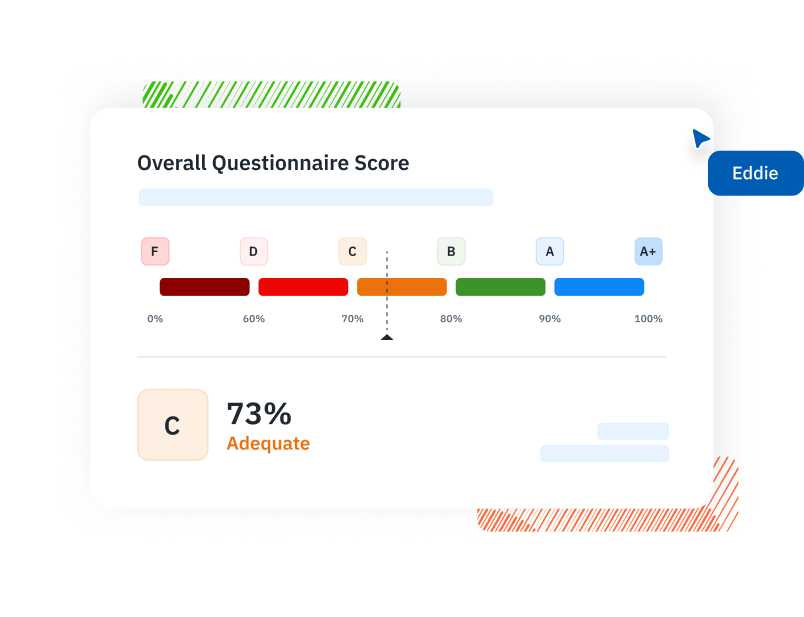
2. ServiceNow GRC
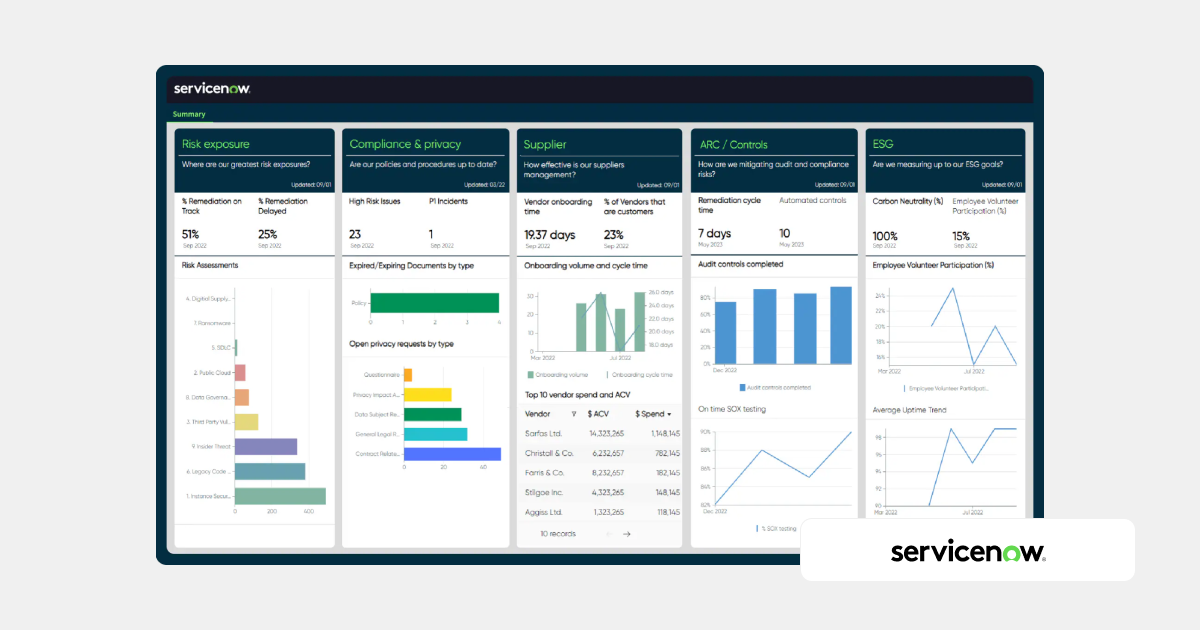
| Category | Details |
| Best For | Organizations already using ServiceNow for IT operations that want to expand into risk and compliance management. |
| Overview | ServiceNow GRC extends the ServiceNow platform to include risk, compliance, and audit functions. It’s a logical next step for teams already invested in the ServiceNow ecosystem, but it’s often complex to configure and not purpose-built for day-to-day security risk workflows. |
| Strengths | ✅ Integrates smoothly with ServiceNow ITSM and other business processes
✅ Supports structured workflows for policy, compliance, and risk events |
| Limitations | ⚠️ Complex setup and maintenance; often requires consultants or dev support
⚠️ Not intuitive for teams outside of the ServiceNow ecosystem or focused purely on IT/vendor risk |
| When to Consider | If you need to tie risk and compliance into existing ServiceNow infrastructure but can work around the steep learning curve and lack of focus on practical security workflows. |
| Other Comparisons | Archer IRM vs ServiceNow GRC vs Isora GRC
OneTrust vs ServiceNow GRC vs Isora GRC |
3. MetricStream
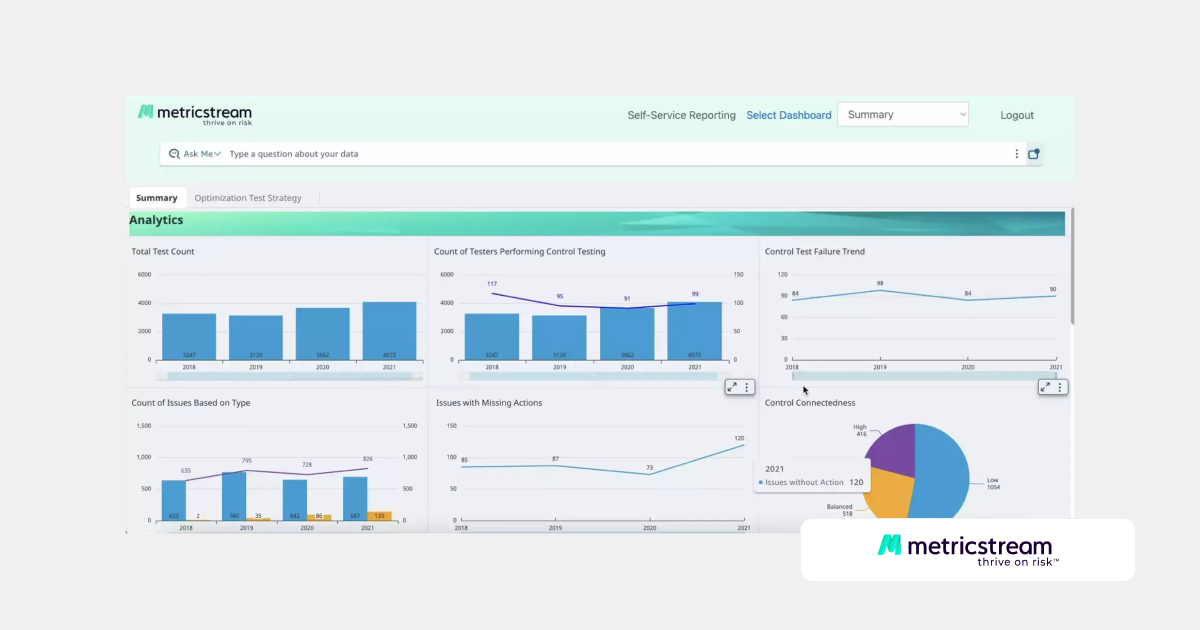
| Category | Details |
| Best For | Large organizations with multiple departments needing a centralized GRC system for broad regulatory and risk oversight. |
| Overview | MetricStream is a comprehensive enterprise GRC platform used across industries to manage governance, risk, and compliance at scale. While powerful, it’s often seen as too heavy and complex for security teams focused on IT and third-party risk. |
| Strengths | ✅ Supports large-scale compliance efforts and regulatory frameworks like NIST 800-53
✅ Centralizes audit, risk, and policy management across business units |
| Limitations | ⚠️ Long setup times and heavy configuration requirements
⚠️ Not built for fast-moving security teams needing flexible, everyday risk workflows |
| When to Consider | If you need a broad, enterprise-wide GRC platform but can work around the complexity, slower adoption, and lack of task-based IT risk features. |
| Other Comparisons | MetricStream vs SAP GRC vs Isora GRC |
4. SAP GRC
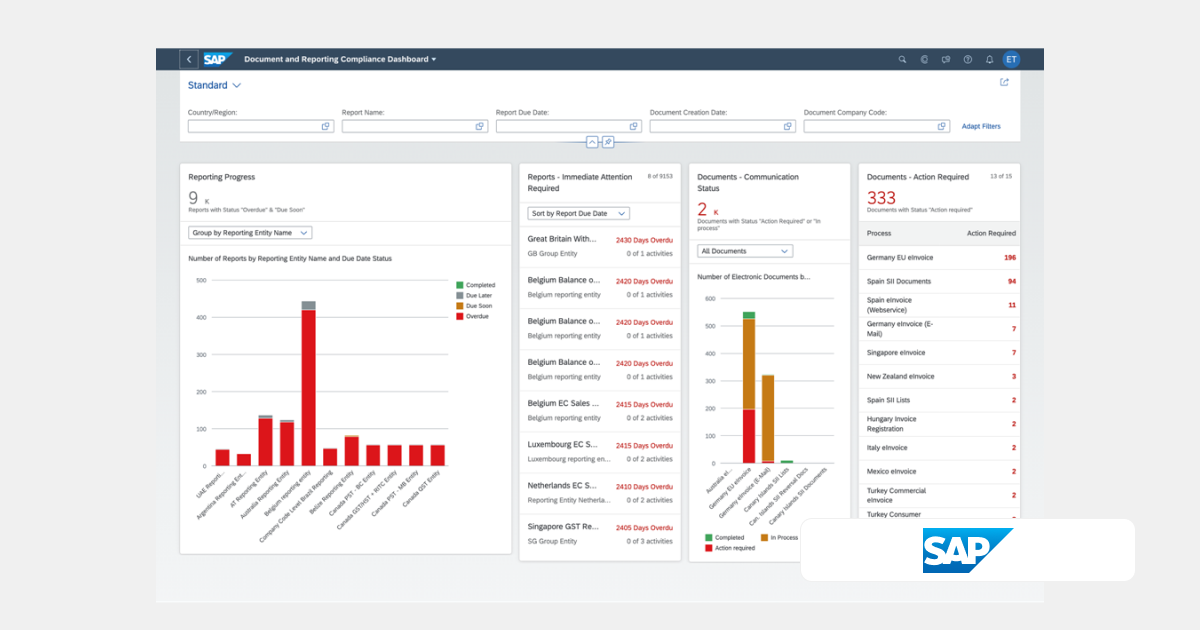
| Category | Details |
| Best For | Organizations already deeply invested in SAP systems that want to manage risk and compliance directly within that ecosystem. |
| Overview | SAP GRC is designed to help businesses manage risk, controls, and compliance across SAP’s business software. While tightly integrated with SAP, it’s often viewed as outdated and difficult to adapt to the fast-changing needs of modern IT and security teams. |
| Strengths | ✅ Strong integration with SAP’s financial, operational, and audit systems
✅ Useful for enforcing policies and controls across enterprise applications |
| Limitations | ⚠️ Rigid and difficult to customize for IT-specific or third-party risk use cases
⚠️ Outdated interface and slow to adopt modern security practices or frameworks |
| When to Consider | If your team already runs SAP across the enterprise but can work around limited usability, flexibility, and a dated approach to IT risk and vendor management. |
| Other Comparisons | MetricStream vs SAP GRC vs Isora GRC |
5. LogicGate
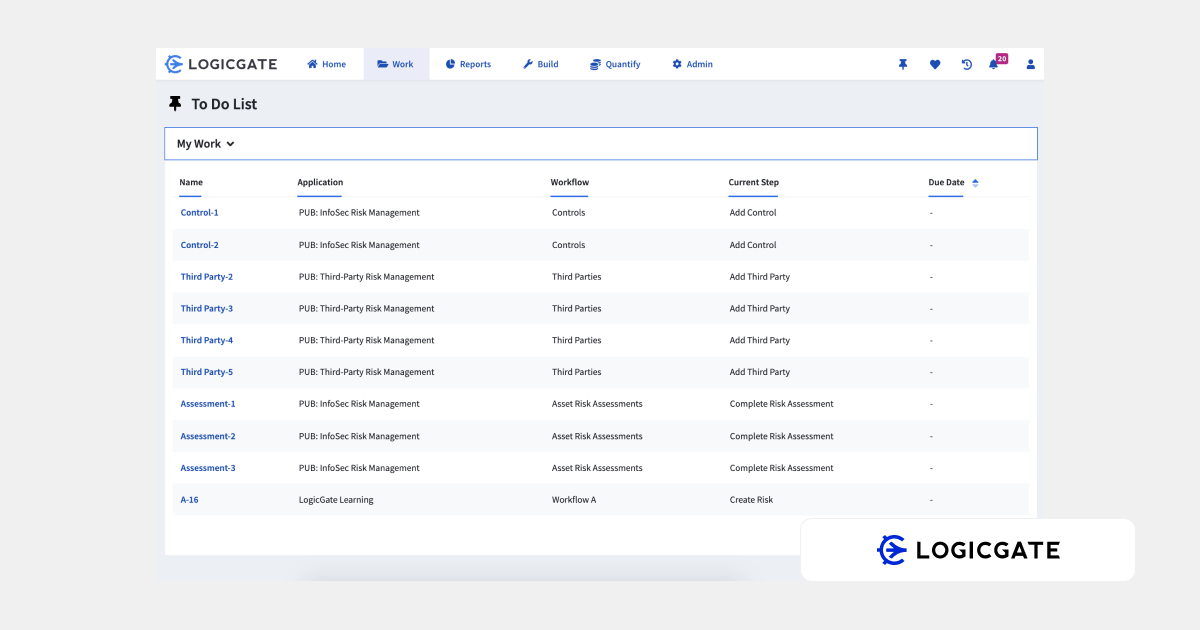
| Category | Details |
| Best For | Security or compliance teams that want to build custom risk workflows and have the resources to manage them over time. |
| Overview | LogicGate is a flexible GRC platform that allows teams to create tailored workflows for risk, compliance, and vendor oversight. It’s more adaptable than traditional GRC tools, but takes time and technical know-how to configure and maintain effectively. |
| Strengths | ✅ Highly customizable platform for building risk and compliance workflows
✅ Supports common frameworks like NIST and ISO through flexible templates |
| Limitations | ⚠️ Requires technical expertise and time to fully configure and use effectively
⚠️ Collaboration and reporting features may feel limited for complex or cross-functional teams |
| When to Consider | If you need full control over risk processes and can invest time in setup and maintenance but can work around slower adoption and limited out-of-the-box structure for security teams. |
| Other Comparisons | LogicGate vs Archer IRM vs Isora GRC |
6. OneTrust GRC
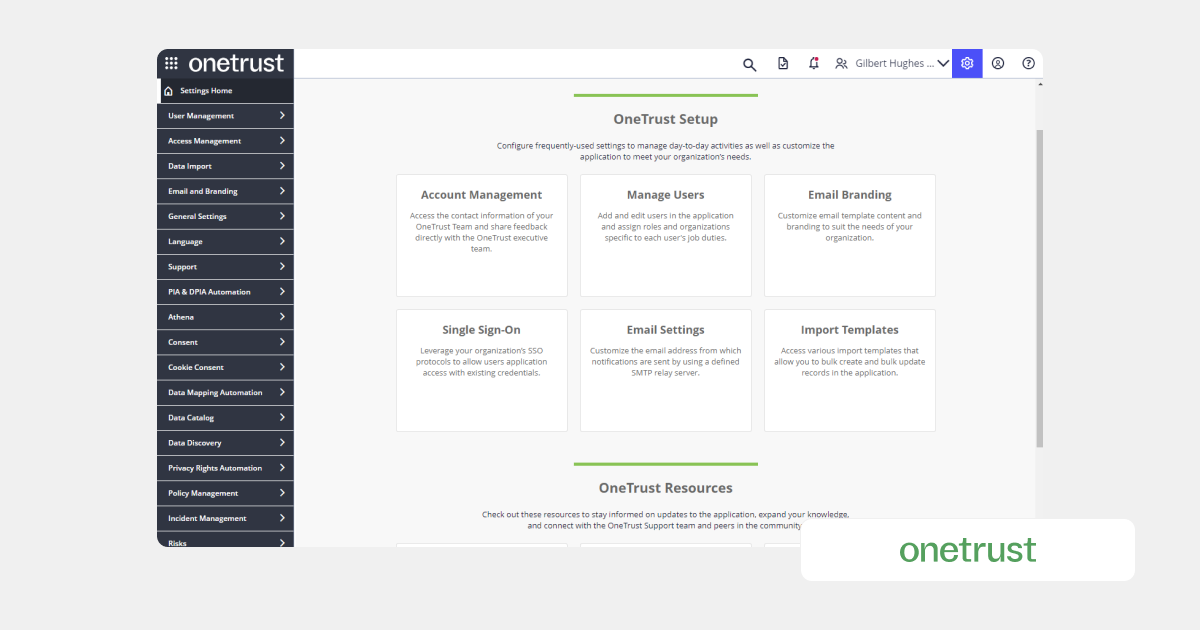
| Category | Details |
| Best For | Teams focused on privacy, third-party risk, and regulatory compliance rather than full internal IT risk programs. |
| Overview | OneTrust GRC provides a broad set of tools for privacy, compliance, and third-party risk management. It’s popular for vendor oversight and regulatory alignment, but it’s not built for hands-on IT risk assessments, asset tracking, or security team workflows. |
| Strengths | ✅ Strong coverage of privacy regulations and vendor compliance requirements
✅ Includes templates for third-party assessments like CAIQ and SIG |
| Limitations | ⚠️ Not ideal for internal IT or cybersecurity risk tracking
⚠️ Customizing workflows can be complex and slow, especially for non-technical users |
| When to Consider | If your focus is on privacy and vendor documentation but you can work around limited support for structured IT risk assessments and collaboration across technical teams. |
| Other Comparisons | OneTrust vs ServiceNow GRC vs Isora GRC |
7. AuditBoard
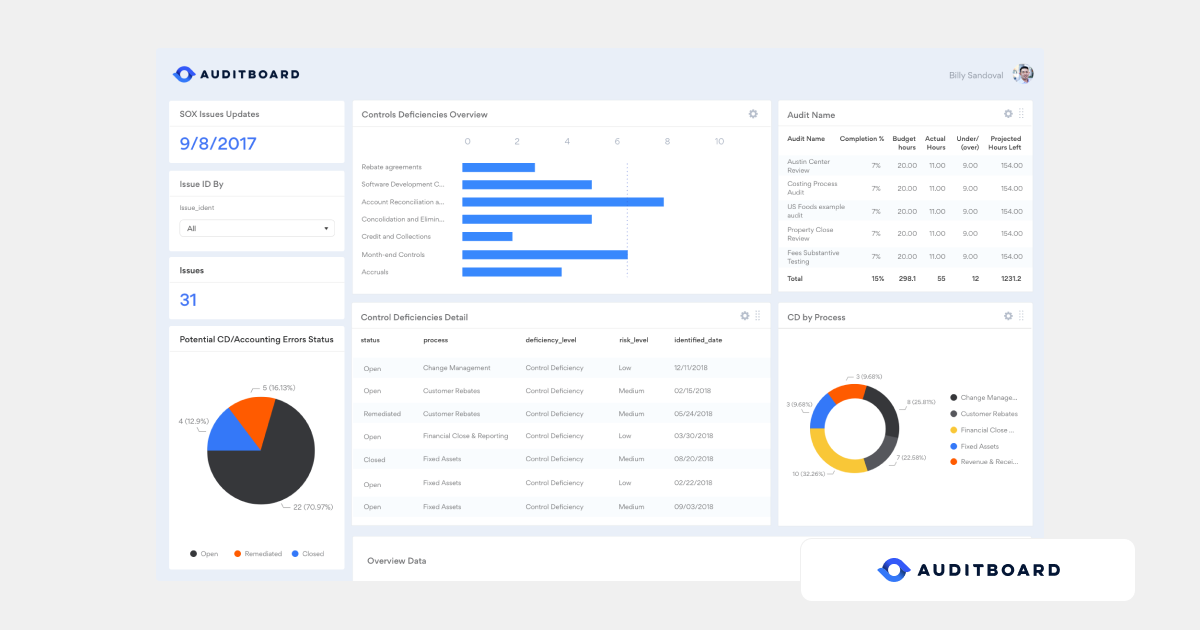
| Category | Details |
| Best For | Audit and compliance teams that need a streamlined platform to manage controls, documentation, and internal audits. |
| Overview | AuditBoard is designed for audit professionals and control owners, offering tools to manage evidence collection, track compliance, and link controls to risks. While it’s simple for auditors, it lacks the flexibility and depth needed by security teams for IT and vendor risk management. |
| Strengths | ✅ Great for audit tracking, control documentation, and evidence management
✅ Supports collaboration between audit and compliance teams |
| Limitations | ⚠️ Not built for IT or third-party risk workflows like asset inventories or security assessments
⚠️ Lacks flexibility for dynamic or cross-functional risk management programs |
| When to Consider | If you’re audit-driven and need an easy way to track compliance but can work around the limited IT and security risk functionality. |
| Other Comparisons | AuditBoard vs ServiceNow GRC vs Isora GRC |
8. ZenGRC
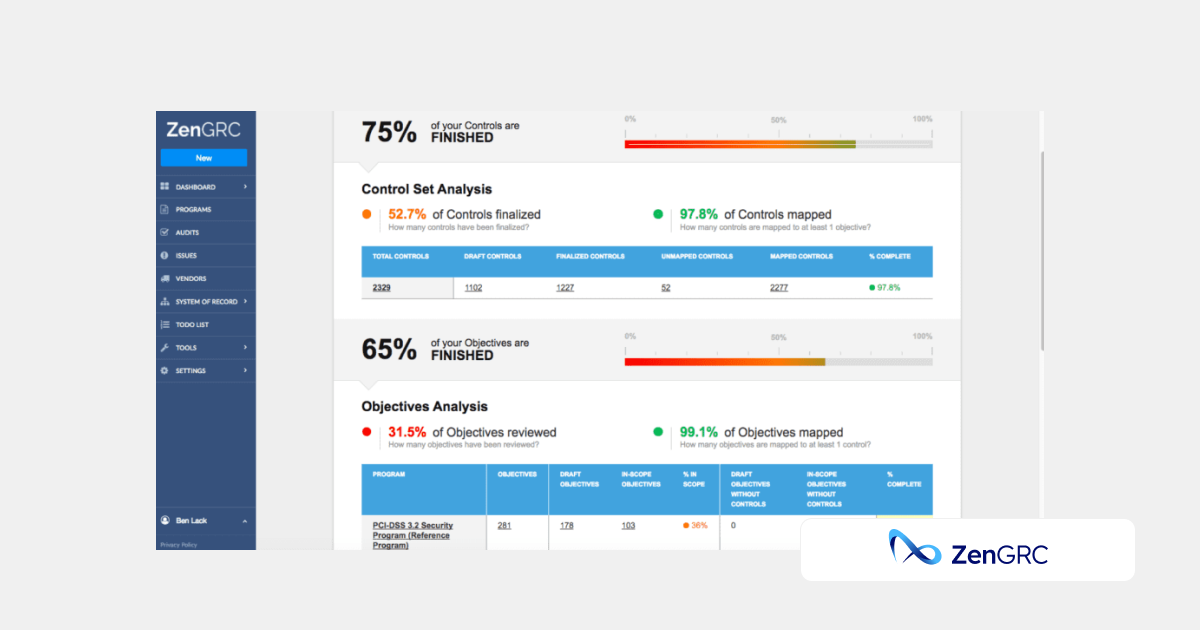
| Category | Details |
| Best For | Teams looking for a lightweight platform to manage audits, policies, and basic compliance tasks. |
| Overview | ZenGRC offers an easy starting point for audit and compliance tracking, with prebuilt templates for frameworks like SOC 2 and ISO. While user-friendly, it’s focused more on checklists than full IT or vendor risk workflows, and may feel limited as programs mature. |
| Strengths | ✅ Simple interface with fast setup for audit and policy tracking
✅ Prebuilt templates for common compliance frameworks |
| Limitations | ⚠️ Limited tools for IT asset management, vendor risk, or deep assessments
⚠️ May feel too basic or checklist-driven for teams with broader risk goals |
| When to Consider | If you’re just starting out and need help organizing compliance evidence but can work around limited support for scalable IT and vendor risk workflows. |
| Other Comparisons | ZenGRC vs AuditBoard vs Isora GRC |
9. Onspring
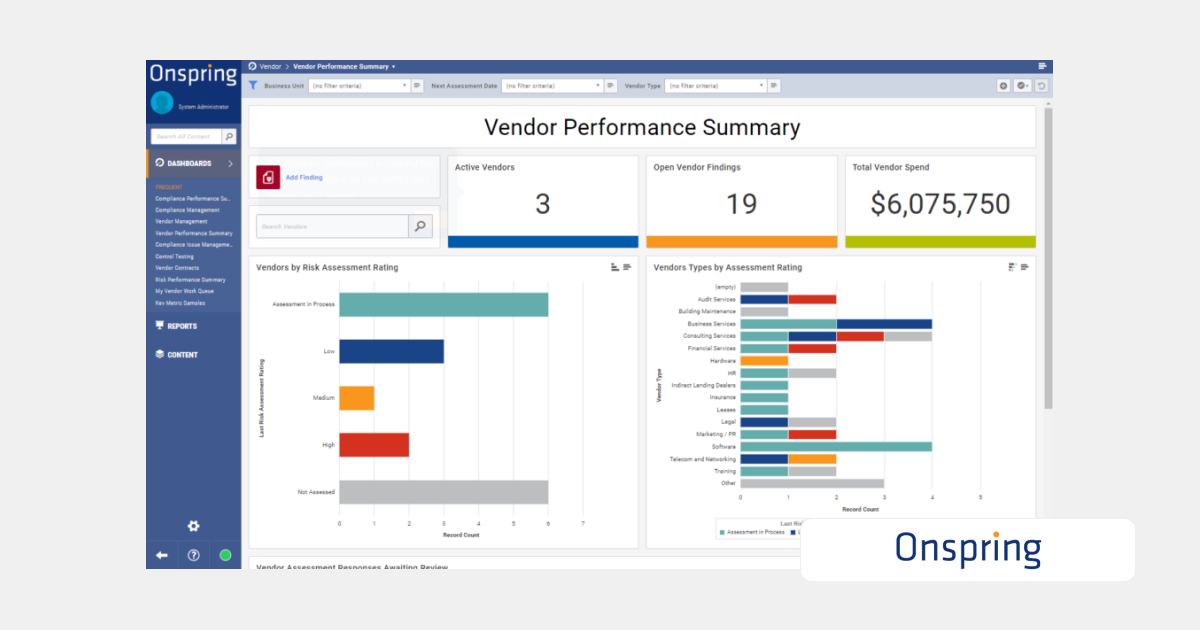
| Category | Details |
| Best For | Teams that want a no-code platform to build customized audit, risk, and compliance processes across departments. |
| Overview | Onspring is a highly configurable GRC platform that allows users to build tailored workflows without coding. It’s a strong fit for audit or legal teams that need control over process design but it may be too broad or complex for security teams focused on scalable IT and vendor risk workflows. |
| Strengths | ✅ No-code customization allows for flexible risk, audit, and compliance workflows
✅ Works well for departments like legal, internal audit, and compliance that need structured processes |
| Limitations | ⚠️ Requires time and planning to design and maintain effective workflows
⚠️ May be overkill for security teams that want focused IT risk and vendor assessment tools |
| When to Consider | If you need a highly customizable platform across business units but can work around the lack of built-in support for fast, repeatable IT and vendor risk workflows. |
| Other Comparisons | Onspring vs AuditBoard vs Isora GRC |
What Our Customers Say About Isora GRC
Security teams at top institutions are using Isora GRC to replace legacy tools and manual processes with intuitive workflows and actionable insight.
“Moving from manual processes to using Isora was a breath of fresh air. What used to take months is now automated, reliable, and defensible. Isora saves us significant time while delivering accurate insights that improve decision-making.”
Jessica Sandy, IT GRC Manager, The University of Chicago
“Isora has been essential in helping us meet our University of California cybersecurity requirements across a decentralized campus. Automating assessment data collection and reporting has given us clear visibility into unit-level risks, enabling us to prioritize resources effectively and address gaps with confidence.”
Allison Henry, CISO, The University of California, Berkeley
FAQs
What are some alternatives to Archer IRM?
Archer IRM is part of a category of all-in-one GRC platforms—broad tools built for enterprise governance. Alternatives like Isora GRC provide structured, purpose-built workflows for managing IT and third-party risk without the complexity of heavy configuration and long implementations.
Why do teams switch from Archer IRM to platforms like Isora GRC?
Many security teams find that Archer IRM is overbuilt for their needs. Its flexibility comes at the cost of speed, usability, and internal adoption. Teams move to Isora GRC when they need to manage risk assessments, inventories, and exceptions in a faster, more collaborative way—without relying on consultants or developers.
Does Isora GRC replace tools like Archer IRM or complement them?
In most cases, Isora GRC replaces Archer IRM for security and third-party risk teams. While Archer is designed for broad enterprise governance, Isora focuses on the specific workflows security teams use every day—making it easier to operationalize risk management without layering on another tool.
Which platform is better for managing IT risk assessments and exceptions?
Archer IRM can support assessments, but the process is often manual or requires significant setup. Isora GRC offers built-in workflows for issuing assessments, collecting responses, tracking exceptions, and maintaining a risk register—all in a platform designed for adoption across the organization.
What should I look for in an Archer IRM alternative?
Look for a platform that supports structured risk workflows out of the box, including internal and vendor assessments, exception tracking, and inventory management. You’ll also want fast deployment, usability across teams, and minimal administrative overhead. Isora GRC was built with these exact needs in mind.
This content is for informational purposes only and does not constitute legal or compliance advice. See our full disclaimer.


















